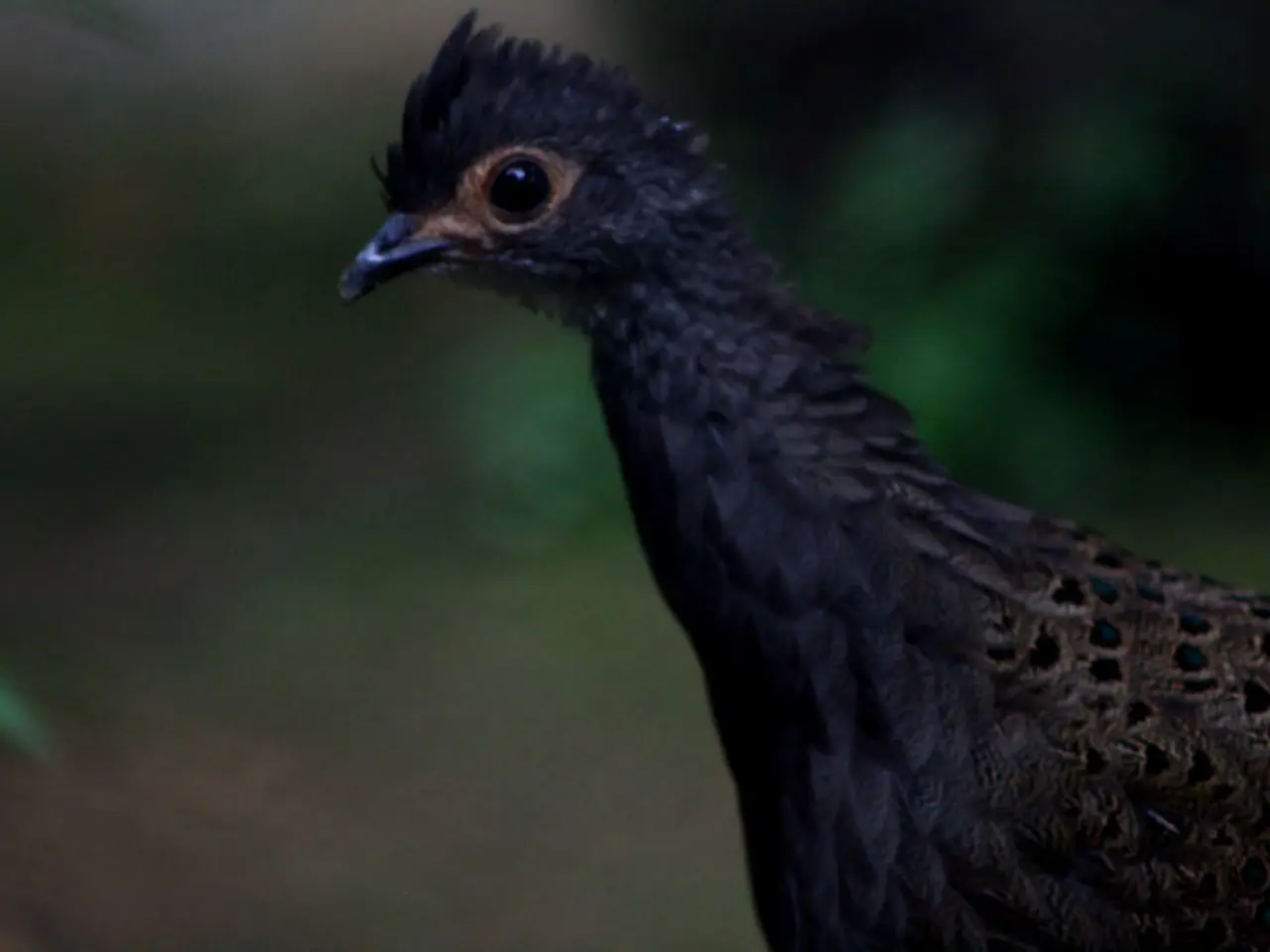Exploring Bird Mating: Insights into the Reproductive Habits of Aviary Creatures
In the vibrant world of avian life, birds exhibit a diverse range of unique mating behaviors that are as captivating as they are intricate. These behaviors, which often include elaborate courtship displays, mate selection rituals, and complex mating systems, serve multiple functions - from strengthening pair bonds to ensuring reproductive success.
Red-tailed Hawks, for instance, perform dramatic aerial courtship displays involving synchronized circling, sky-dancing dives, and interlocking talons mid-air. These displays are not just for show; they help strengthen pair bonds and defend territories. Barn Owls, on the other hand, demonstrate a unique form of mate selection where females observe males’ hunting abilities. Males prove their skill by presenting captured prey to females as a testament to their ability to provide and protect.
Birds attract a mate with a variety of methods, from song to territory. Boobies engage in ritualized dances, including whistling and the behavior known as sky-pointing, during courtship. These elaborate gestures help reinforce pair bonding. In some species, such as the weaver bird or bowerbird, a male's capacity to build a lovely and sturdy nest can be the difference between mating and not.
Mating systems vary widely, from monogamy to polygyny and polyandry. Monogamous birds, like the Great Tit and Northern Cardinal, usually mate for life and both parents contribute actively to nest building and chick rearing. Dunnocks, however, are polyandrous and polygynous birds, with a female mating with several males who all help feed the chicks.
The physical act of mating is simple, with the male riding atop the female and both birds aligning their cloacas for a brief moment or two. This process, known as the cloacal kiss, is the means by which sperm is transferred. Some bird species, such as ducks, geese, swans, and other waterfowl, have penises that aid in sperm transfer, thought to be an adaptation to promote fertilization in water.
Courtship behaviors are as varied as the birds themselves, and often include vocalizations, dances, feather displays, and even territorial fights. These displays are often accompanied by striking breeding plumage changes to attract mates. Some birds engage in courtship feeding, in which the male provides food to the female.
Birdsong is an essential part of courtship behavior, with males often singing to broadcast their strength, territory, and genetic fitness. The duration of the mating activity itself is very short, typically lasting less than a second, while courtship and bonding can last for days or weeks.
After mating, the female initiates egg laying, and both male and female birds share incubation duty, using body warmth to keep eggs at an appropriate temperature. Some birds, like albatrosses, are monogamous and pair for life, returning to the same nesting site year after year.
It's worth noting that some birds can lay infertile eggs without mating, and these eggs will never hatch. Cuckoos, for instance, engage in nest parasitism, laying their eggs in the nests of other species for the host to raise their chicks.
Understanding these processes helps us appreciate how finely tuned ecosystems are and how important it is to conserve natural habitats. Knowing about these mating behaviors also underscores the complexity and beauty of the natural world, making us realize how much we still have to learn about our feathered friends.
References: 1. Red-tailed Hawk Mating 2. Blue-footed Booby Mating 3. Barn Owl Mating 4. Bird Mating Behaviors 5. Bird Mating Systems
- Ornithology reveals that birdwatching is a popular pastime, drawing observers to appreciate the intricate mating behaviors of various bird species.
- The science of birds, ornithology, shows us that bird species employ a multitude of methods to attract mates, such as singing, sky-pointing, and building elaborate nests, demonstrating the health-and-wellness benefits of connecting with nature.
- Birdwatching and studying bird mating behaviors can provide a sense of tranquility and peace, enhancing mental and physical well-being, further highlighting the importance of preserving bird habitats and promoting the field of ornithology.




